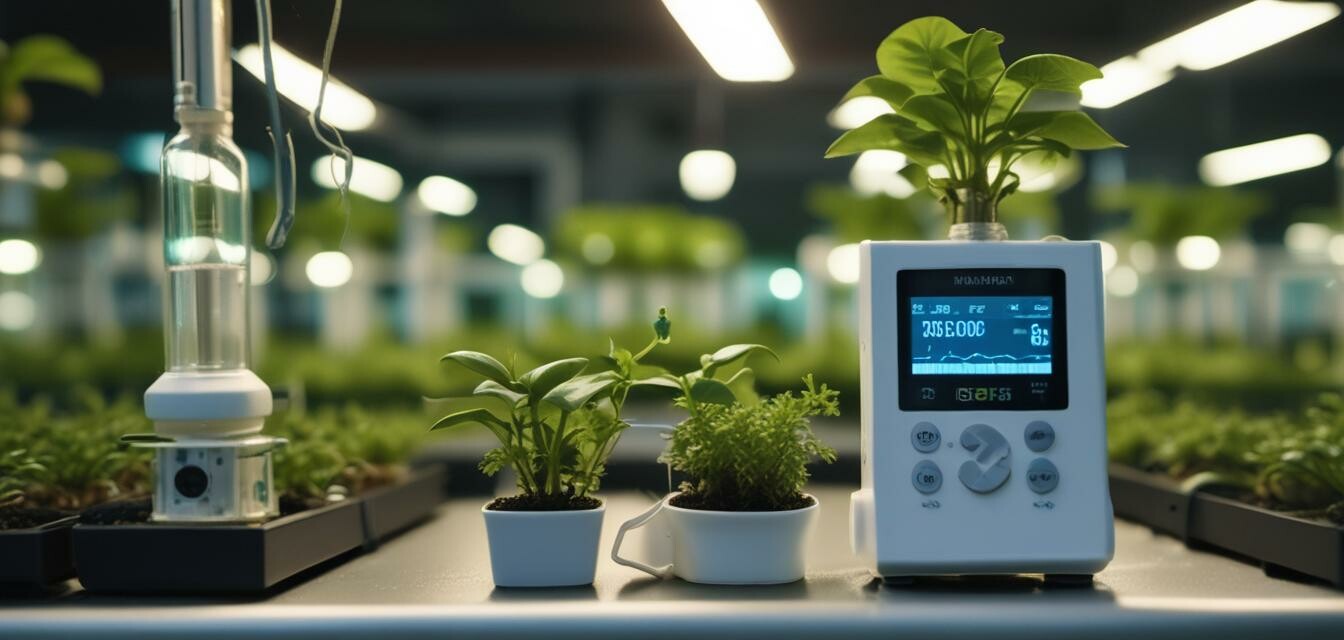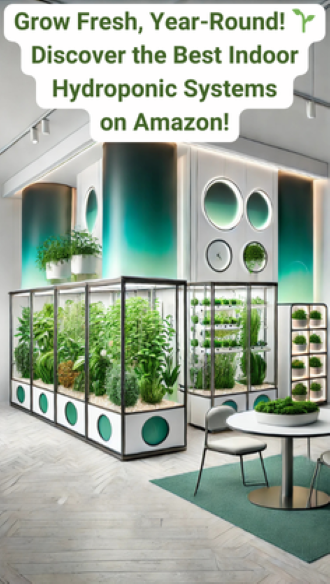
Understanding EC and TDS in Hydroponics
Key Takeaways
- Electrical Conductivity (EC) measures the ionic content in the nutrient solution.
- Total Dissolved Solids (TDS) evaluates the total dissolved substances in the water.
- Maintaining optimal EC and TDS levels is crucial for plant health and growth.
- Regular monitoring can help prevent nutrient deficiencies and toxicities.
- Different plants have specific EC and TDS requirements.
In hydroponics, understanding the concepts of Electrical Conductivity (EC) and Total Dissolved Solids (TDS) is essential for managing plant health effectively. These two measurements offer insights into the nutrient levels available to your plants. In this article, we will delve deeper into these concepts, explore their importance, and how to monitor them for optimal growth.
What is Electrical Conductivity (EC)?
Electrical Conductivity (EC) is a measurement of how well a solution can conduct electricity, which is directly related to the concentration of ions or salts in that solution. In the context of hydroponics, it is crucial because it indicates the nutrient strength available to the plants.
Measuring EC
EC is usually measured in microsiemens per centimeter (µS/cm) or millisiemens per centimeter (mS/cm). The measurement indicates the ionic strength of the nutrient solution, thereby affecting the nutrient uptake by plants.
Optimal EC Levels for Common Plants
| Plant Type | Optimal EC (µS/cm) |
|---|---|
| Lettuce | 800 - 1200 |
| Tomatoes | 1400 - 1600 |
| Peppers | 1200 - 1500 |
| Cucumbers | 1100 - 1300 |
What is Total Dissolved Solids (TDS)?
Total Dissolved Solids (TDS) refers to the total concentration of dissolved substances in the water, including minerals, salts, and organic matter. TDS is expressed in parts per million (ppm) or milligrams per liter (mg/L).
Measuring TDS
TDS can be measured using specialized meters that often convert the EC reading into TDS automatically, applying a conversion factor depending on the type of dissolved solids present.
Understanding TDS Levels
Like EC, maintaining the appropriate TDS level is vital for plant health. If the TDS levels are too high, plants may suffer from nutrient burn, while levels that are too low can lead to nutrient deficiencies.
Optimal TDS Levels for Common Plants
| Plant Type | Optimal TDS (ppm) |
|---|---|
| Lettuce | 500 - 700 |
| Tomatoes | 800 - 1200 |
| Peppers | 600 - 800 |
| Cucumbers | 700 - 900 |
Why EC and TDS Matter
Monitoring EC and TDS is essential for several reasons:
- Helps maintain balanced nutrient levels which promotes healthy plant growth.
- Prevents deficiencies and toxicities by maintaining optimal nutrient concentrations.
- Facilitates adjustments in nutrient solutions based on plant needs and growth stages.
- Monitors the effectiveness of your nutrient management strategies.
How to Monitor EC and TDS
Regular monitoring of EC and TDS can be accomplished through the following methods:
- Use of Meters: Invest in reliable EC and TDS meters for precise measurement.
- Routine Testing: Test the nutrient solution weekly to detect changes in levels.
- Calibration: Regularly calibrate your meters for accuracy.
- Record Keeping: Maintain a log of readings to track trends over time.
Common Problems Related to EC and TDS
Understanding the symptoms of nutrient problems related to EC and TDS can aid in quick resolution:
- High EC/TDS: Leaf burn, wilting, or stunted growth.
- Low EC/TDS: Yellowing leaves, slow growth, and leaf drop.
- Fluctuating Levels: Inconsistent growth and plant stress.
Conclusion
Mastering the understanding of EC and TDS is crucial for successful hydroponic gardening. By regularly monitoring these levels and ensuring they stay within the optimal range for your chosen plants, you can guarantee your garden will thrive. For more insights into keeping your hydroponic garden flourishing, explore our other articles on buying guides, hydroponic innovation updates, and growing techniques.
Beginner Tips
- Start with easy-to-grow plants while you become familiar with EC and TDS management.
- Consider using a digital meter for accurate and easy readings.
- Adjust your nutrient solutions gradually to avoid shocking your plants.
- Join online forums or communities to share experiences and learn from others.
Pros
- EC and TDS measurements help ensure balanced nutrient levels.
- Regular monitoring can lead to healthier plants and better yields.
- Identifying issues early on can save time and resources.
Cons
- Requires investment in meters and calibration solutions.
- Can be time-consuming, especially for beginners.
- Interpreting results may be difficult without practice.
